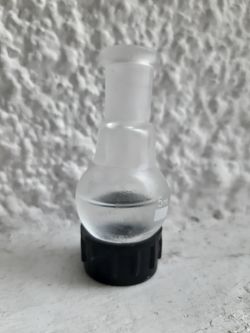Butane
 Liquid butane
| |
| Names | |
|---|---|
| IUPAC name
Butane
| |
| Other names
Butyl hydride
Methylethylmethane Quartane | |
| Properties | |
| C4H10 | |
| Molar mass | 58.12 g/mol |
| Appearance | Colorless gas |
| Odor | Gas-like |
| Density | 2.48 g/cm3 (at 15 °C) |
| Melting point | −138.3 °C (−216.9 °F; 134.8 K) |
| Boiling point | -0.5 −138.3 °C (−216.9 °F; 134.8 K) |
| 0.61 g/100 ml (at 20 °C) | |
| Solubility | Soluble in chloroform, diethyl ether, ethanol, THF |
| Vapor pressure | ~170 kPa at 10 °C |
| Thermochemistry | |
| Std enthalpy of
formation (ΔfH |
−126.3 – −124.9 kJ/mol |
| Hazards | |
| Safety data sheet | Sigma-Aldrich |
| Flash point | −60 °C (−76 °F; 213 K) |
| Related compounds | |
| Related compounds
|
Propane Pentane |
| Except where otherwise noted, data are given for materials in their standard state (at 25 °C [77 °F], 100 kPa). | |
| Infobox references | |
Butane is an organic compound, with the chemical formula C4H10. It consists of two structural isomers, n-butane and isobutane, also known as methylpropane.
Contents
Properties
Chemical
Both butane isomers react with halogens to yield halobutanes in the presence of UV light. Iodine however does not react with butane, instead it dissolves in it.
Butane burns in air to produce carbon dioxide and water vapor.
- C4H10 + 13/2 O2 → 4 CO2 + 5 H2O
Physical
Butane is a gas at standard conditions, easily compressible. Butane consists of two isomers:
- n-Butane: A colorless gas at standard conditions, n-butane melts at −138 °C and boils at -0.5°C. Its density is 0.579 g/mL at 20 °C. The flash point of n-butane is 45 °C.
- Isobutane: Just like the n isomer, isobutane is a colorless gas. It melts at −160 °C and boils at −12 °C.
The solubility of butane in various organic solvents depends strongly on temperature and type of solvent. Some solvents, such as xylene appears to be miscible with butane.
Availability
Camping fire stove tanks contain a mixture of isobutane with propane, usually in a 80:20 ratio.
If pure butane is desired, you can buy it from gas companies, if they're willing to sell it to individuals.
Preparation
N-butane can be prepared by decarboxylating valeric acid salts.
Projects
- Butyl alcohols
- Halobutanes
- Maleic anhydride synthesis
- Campfire fuel
Handling
Safety
Butane has low toxicity, but in high concentration can cause asphyxiation. It is very flammable and in closed chambers may form explosive mixtures with air, though since butane is heavier than air, it will mostly build-up in the lower parts of the room.
Storage
Butane tanks should be stored in cold places.
Disposal
Butane can be safely released in open air or burned. Do not release it in closed chambers, as being flammable will form explosive mixtures with air.